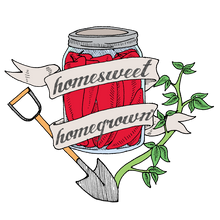Homesweet Homegrown Chili Pepper Growing Guide
Growing your own chili peppers is so fun, and if you take good care of them, each plant can produce a pound or more! Not super picky, most chili peppers can be grown in a pot, raised bed, or out in the garden.
If you received one of our starts in the mail, unpack as soon as you receive it, give it some water, and place it in a partly shady spot for a day to allow it time to adjust from the trip. The next day, feel free to transplant immediately into a 12 inch pot, or directly in the ground--planting outside on a cloudy day is ideal as it gives the plant a chance to focus on growing strong roots instead of photosynthesis. If they lost any leaves during the trip, don't worry, these will grow back!
Peppers are formidable and will adapt to their new surroundings pretty quickly--happy growing!
Days to harvest: 50 to 70 days, harvest starts in late summer and lasts through first frost. The more you pick, the more peppers produce!
Getting started: Transplants are the easiest way, or start inside 7 weeks before last frost. Peppers like it warm, so plant outside 2 weeks after last frost to be on the safe side.
Companions: Basil, tomatoes, geraniums, petunias
Plants to Avoid: Beans, kale, collards, brussel sprouts
Spacing: Peppers can get quite large, so try to give them at least a foot of space per plant.
Watering: Chili peppers like about an inch of water ever 5 days. Pro-tip: If you want your peppers to get extremely hot, reduce watering a bit before harvesting and they will get even hotter!
Harvest: Pick peppers when they reach full size, and intended color. When harvesting, cut rather than pull the peppers to avoid breaking branches.
Growing Tip: Once they start fruiting, peppers get a little top heavy. Give them some love by hooking them up with bamboo supports or wire cages to keep them standing tall.
Storage: Peppers freeze beautifully for up to two years in a Ziploc of Mason jar.

